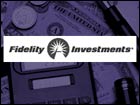
NEW YORK (CNN/Money) -
Nearly six years ago, Robert Stansky landed the toughest job in the investment world: manager of the Fidelity Magellan fund. With $80 billion in assets, Magellan is the size of the entire economy of Ireland. Almost 6 million investors have money riding on the fund. Among its past managers: famed market-beaters Ned Johnson, Peter Lynch and Jeff Vinik.
Unlike the once-ubiquitous Lynch, Stansky rarely gives interviews. Making an exception for MONEY, the 46-year-old speaks contemplatively, in a low, slow voice, clearly wanting to convey an image of calm control. Slouching in his chair, hands in his pockets, he seems almost mellow. But you can see Stansky's intensity in the sharp stare of his green eyes. His obsession with stocks is hard to miss: Clutching a printout of the spreadsheets he uses to analyze his holdings, he confesses that he never goes anywhere without these beloved "sheets."
Stansky, the son of a furnace serviceman for a gas company, has come a long way. Working as an accountant after graduating from Nichols College, he bet $500 of his $600 in savings on Valtec Industries, a fiber-optics stock. Stansky paid $9 a share; it dropped to $6, then rocketed to $60 in barely a year. "And I said, 'Wah! This could be fun,'" he recalls.
Stansky headed for business school at NYU, where one of his professors was Robert Levine, an analyst at Kidder Peabody, who taught him that you can understand companies better by studying both their stocks and their bonds. Stansky worked briefly at Kidder, then landed at Fidelity. He became an assistant to Peter Lynch, then took over Magellan after racking up stellar returns at the Fidelity Growth Company fund.
Even today, Stansky insists on studying a company's debt before buying its stock. But that's only part of how he segments companies when he researches them. On Stansky's sheets, every firm is broken up into parts, which he separately values and compares with similar parts of rival companies.
So instead of just comparing GE with other conglomerates, Stansky compares all of its pieces -- aircraft parts, appliances, finance, etc. -- with their competitors. Then he adds them all back up, subtracts out the company's debt and looks to see how far the stock is below its peak. (The first column on Stansky's sheets is headed "OH," for "off [its] high.") These are simply his refinements to the classic Fidelity model of seeking growth stocks at reasonable prices. As Stansky puts it, he wants to "get paid twice" by finding companies whose earnings and P/E ratio can both grow.
His goal in running Magellan: "I'm trying to beat the S&P 500 by as much as I can every year. If the S&P's down, I hope to be down a little less. If it's up, I hope to be up a lot more. But I'm trying to be more a consistent fund than a roller-coaster fund. I'd like to beat the market by" -- he pauses -- "300 to 500 basis points before fees would be great." (One hundred basis points is one percentage point.)
That's a far cry from the Peter Lynch days, when Magellan regularly shellacked the S&P by more than 20 percentage points a year. But it's exactly what the new Fidelity wants: Customers will flee if Magellan ever loses big money. And the fund reaps extra fees in any three-year period when it beats the market, even by a whisker. Since April 2000, it's earned some $210 million in these "performance fees." With 85 percent of Magellan's assets in retirement accounts, Fidelity and Stansky can't afford to take big risks. This caution is the ultimate sign that the firm's cowboy culture has been roped in.
"How do you beat the S&P?" asks Stansky. "You beat it by overweighting some groups, underweighting others, and by owning stocks that aren't in the S&P." Last year, Stansky owned 20 percent less tech than the index, and about 20 percent more financial and media stocks. Over the past five years, he's beaten the market by an average of 0.11 percentage points a year -- a tiny margin, but pretty impressive for such an immense fund.
Stansky resents any suggestion that he's merely a "closet indexer," trying to mimic the market instead of beating it: "Sometimes I think if people knew how risky I was acting in the portfolio they'd really be surprised. Just go back a bit -- I made AOL very big; I made Yahoo very big. I'm not afraid to make any bet." Still, he's hardly a wild man: "I diversify enough so that any one bet, if I get it wrong, isn't going to kill the portfolio."
As of mid-December, Stansky was lukewarm on tech. "We're in a little bit of the tech bubble area again today, using 2003 [earnings estimates]," he says. "I'm just not convinced that 2002 will show the guaranteed second-half strength everyone's counting on." Instead, he's high on media stocks like Viacom (one of his top 10 holdings), plus financial firms like Goldman Sachs (roughly 1 percent of the fund) and Citigroup (his second-largest holding). He expects these consumer-oriented stocks to benefit early as the economy recovers.
The interview over, Stansky heads toward his office. As he ambles down the hall, he can't help himself: He starts reading those sheets again.
|

